What to Expect With Professional Air Duct Cleaning
Aug 31, 2019 4:00 AM
Summer in Atlanta can get hot and humid. But while the outdoors can feel like a sauna, many homeowners are lucky enough to enjoy central air conditioning. Your air conditioner performs two critical functions. Most people know that an air conditioning system cools the air inside your home. But what many people don’t realize is that your HVAC system also removes humidity from the air. That’s why your house feels so much better than the outdoors. Not only is it cooler, but it is also dryer. But as the cool, dry air circulates through your home, it could also be carrying around dust, mold, and allergens. That’s why we recommend an annual HVAC maintenance check and professional air duct cleaning at least once every three to five years.
![Professional Air Duct Cleaning [infographic]](https://s3.amazonaws.com/cdn.trustdale.com/uploads/Professional%20Air%20Duct%20Cleaning%20%5Binfographic%5D.jpg)
What is Inside Your Ducts
Most of us like to think our homes are pretty clean. If you vacuum or mop regularly and dust all the surfaces in your home, you should be pretty dust-free. However, there is one hiding spot out of sight and out of reach where dust and allergens can gather. Many homeowners are amazed to see just how much dust and grime accumulate in their air ducts. No matter how clean you keep your home, if your ducts are hiding dirt and filth, the air in your home can be polluted with dust, mold, and allergens.
The most common buildup in your ducts is dust. In homes and offices, dust has several common components. Dust can include minerals and soil from the outdoors that gets tracked in on shoes and other items. It may also contain human and pet hair, fluff from carpets and textiles, paper fibers, and even a small amount of dead skin cells.
Another common component of domestic dust is dust mites. Dust mites are microscopic arachnids that feed mainly on dead human cells but do not live on humans. Instead, they are present in almost all domestic dust. Their feces and other enzymes they create are often the sources of allergies for people with asthma or dust allergies.
In addition to dust, your ducts probably contain a significant buildup of pollen. This is especially true in Atlanta and throughout Georgia, due to our high concentration of trees and pollen-producing plants.
Ducts may also contain mold and mold spores. Mold spores that are released into the air can make people who inhale them sick. If your ducts test positive for mold spores, additional chemical sanitizers may be necessary as part of your duct cleaning service.
How Often Should You Clean Your Ducts
The general recommendation is to clean your ducts every three to five years. However, that number is a minimum, and may not be sufficient for every situation. If your home is older, you may need your ducts cleaned more often. Also, if you live near lots of trees and pollen-producing plants, you may need more frequent cleaning. If someone in your home has allergies or asthma, more frequent cleaning may help them breathe easier. Homes with pets should also have their ducts cleaned more often than homes without pets. If anyone in your home smokes, your ducts may need more frequent cleaning to keep them clear of buildup from secondhand smoke.
If you’re not sure how often you need to clean your ducts, you can look for some signs that your ducts need to be cleaned. If you notice any of the following, you should have your ducts inspected:
- Extra dust in the home
- Visible dust in the air ducts
- Excess dusty buildup around registers
- Increased breathing and respiratory problems
- Increased allergic reactions
While many duct cleaners also perform HVAC maintenance, not all HVAC technicians are equipped to clean ducts. If you think your ducts need cleaning, contact a TrustDALE certified duct cleaner in your area to schedule an appointment. They can inspect your ducts and determine if you need a cleaning.
How Professional Air Duct Cleaning Works
The primary tool in duct cleaning is similar to the way you clean the rest of your house. A duct cleaning company will attach a specialized vacuum to your ducts to create negative pressure, sucking out much of the dust in the system.
In addition to the vacuum, your duct cleaner may use handheld or remote-controlled tools to brush and scrape the inside of your ducts. Brushing helps to release dust that is stuck to the inside of your ducts so that the vacuum can suck it up.
A professional duct cleaner will also use imaging devices to see the inside of your ducts. They may use some simple handheld tools like mirrors and periscopes to see into your ducts. Many duct cleaners also use cameras and even remote-controlled robots with a camera on wheels to inspect the entire interior of your duct system.
If your ducts show signs of mold, your duct cleaner will use additional chemicals to sanitize the ducts and kill the mold. They may also use a HEPA filter.
The Benefits of Air Duct Cleaning
Ducts can hide a lot of dust, pollen, and other pollutants. When you keep your air conditioning or heat on, all of the air in your home can circulate five to seven times a day. As the air circulates, it picks up the pollutants in the ducts and carries them into your living spaces. The polluted air can coat your home in dust and cause respiratory problems and allergic reactions. So the most significant benefit of cleaning your ducts is reducing pollutants that make people in the house sick.
Besides making you feel better, clean ducts use less energy. As ducts fill up with dust, the dust can clog the ducts and filters. The more clogged your HVAC system is, the harder it has to work to circulate air and the more energy it uses.
Clean ducts will also keep your home cleaner. You may dust, mop, and vacuum your home regularly, but if your ducts are dirty, they are spreading new dust around your home even as you are cleaning. With clean ducts, you may notice that your home is less dusty and your home stays clean longer after a routine cleaning.
Tips for Dryer Vent Cleaning
In addition to cleaning your HVAC duct system, a professional duct cleaning company will clean out your dryer vent. Just like the lint screen on your dryer catches all sorts of fluff from the clothes and other items you dry, your dryer vent can become clogged with fluff and debris over time.
There are a few different ways to check if your dryer vent needs cleaning. First, go outside while your dryer is running and place your hand near the dryer vent exhaust. You should feel warm air blowing out of the vent. If the air feels like it is barely blowing or if it is not blowing at all, your ducts may be clogged. You can also check behind your dryer for any lint and fluff that has gathered on the floor. Excess lint is a sign that your ducts need cleaning. If you notice that your clothes are not drying as quickly as they should or that it takes more than one cycle to get your clothes dry, your vents are likely too clogged to circulate dry, warm air properly.
If you see any of these signs, it’s probably time to clean your dryer vent. A dryer duct system is usually much smaller than an HVAC duct system. You can try using your home vacuum to clean some of the lint out of your dryer vent. However, a severely clogged duct should be cleaned by a professional duct cleaning company.
Finding a Professional Duct Cleaning Company
There are plenty of companies out there that advertise duct cleaning. However, the quality of the cleaning can vary considerably between different companies. The first thing to look for is a duct cleaning company that is NADCA-certified (National Air Duct Cleaning Association). As with any business you hire, we also suggest looking at online reviews and checking on referrals.
Of course, the easiest way to find a high-quality duct cleaning business is to use TrustDALE. Here’s a list of TrustDALE certified duct cleaning services in your area.


